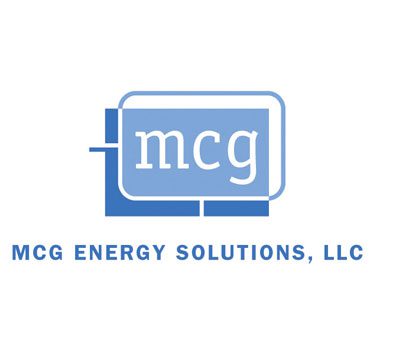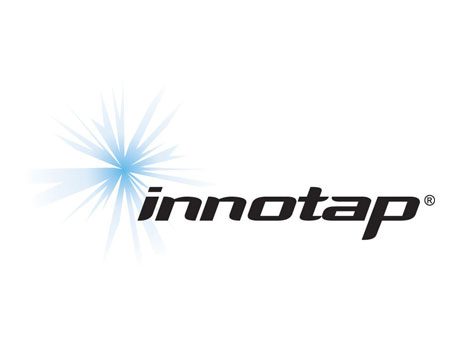One Expert’s View On The Near-Term Future Of Energy Storage
I spend a good deal of time at energy storage conferences, trying to figure out where the various technologies and business models are headed. I thought I had most of the nuances figured out – until I ran into Sam Jaffe at the Energy Storage Association conference in Charlotte in April. After a brief discussion, I realized I had some more understanding to do, and was able to arrange a follow-up conversation. I first met Jaffe when he was active at Navigant Research as their main energy storage analyst, and he has since moved on to become Managing Director at Cairn Energy Research Advisors (Cairn ERA). Jaffe’s spent more than 10 years in energy storage as an analyst, consultant, entrepreneur and executive from all ends of the business. So he’s practically been watching this space since before it became relevant.
The power grid’s Swiss Army knife: Storage is a complex area to follow, since batteries are the Swiss Army knives of the energy world: they have multiple applications and you often need to ‘stack’ more than one value proposition in order to make the economics work. To be attractive in the market, you might not need the fork and the toothpick, but at a minimum you’d better have the scissors, the blade, and (above all) the corkscrew. In addition, there are multiple technologies, with some being quite different – such as flow batteries vs lithium ion. Other technologies are characterized by more minor distinctions – for example, the different types of lithium ion batteries (as one example, lithium ion batteries for electric vehicles and for stationary storage possess different chemistries).
Cairn ERA pays attention to the different ways storage might be applied, both today and in the future. The company tracks over 25 different applications, and for each of these they have developed a separate business model. The challenge is, in Jaffe’s words,
if you were to own a battery, how would you make money operating that battery? Most of these models are not profitable today. In other words, there are a lot of ideas about what to do and how to make money, but very few are profit positive.
In that sense, storage is far different than the alternative energy resources the market is more used to dealing with, such as wind and solar. To vastly oversimplify, in each of those cases, you construct the resource, connect it to the grid, and step away as it passively harvests energy from an invisible wind current or a stream of solar photons. Batteries, by contrast, are much more complex, starting with the fact that you can absorb or release energy over specific timeframes in varying quantities. Jaffe observes that there are many things one can do with batteries and the use-cases vary from utility to utility, region to region, and country to country, and “nothing is simple about this industry.”
I spend a good deal of time at energy storage conferences, trying to figure out where the various technologies and business models are headed. I thought I had most of the nuances figured out – until I ran into Sam Jaffe at the Energy Storage Association conference in Charlotte in April. After a brief discussion, I realized I had some more understanding to do, and was able to arrange a follow-up conversation. I first met Jaffe when he was active at Navigant Research as their main energy storage analyst, and he has since moved on to become Managing Director at Cairn Energy Research Advisors (Cairn ERA). Jaffe’s spent more than 10 years in energy storage as an analyst, consultant, entrepreneur and executive from all ends of the business. So he’s practically been watching this space since before it became relevant.
The power grid’s Swiss Army knife: Storage is a complex area to follow, since batteries are the Swiss Army knives of the energy world: they have multiple applications and you often need to ‘stack’ more than one value proposition in order to make the economics work. To be attractive in the market, you might not need the fork and the toothpick, but at a minimum you’d better have the scissors, the blade, and (above all) the corkscrew. In addition, there are multiple technologies, with some being quite different – such as flow batteries vs lithium ion. Other technologies are characterized by more minor distinctions – for example, the different types of lithium ion batteries (as one example, lithium ion batteries for electric vehicles and for stationary storage possess different chemistries).
Cairn ERA pays attention to the different ways storage might be applied, both today and in the future. The company tracks over 25 different applications, and for each of these they have developed a separate business model. The challenge is, in Jaffe’s words,if you were to own a battery, how would you make money operating that battery? Most of these models are not profitable today. In other words, there are a lot of ideas about what to do and how to make money, but very few are profit positive.
In that sense, storage is far different than the alternative energy resources the market is more used to dealing with, such as wind and solar. To vastly oversimplify, in each of those cases, you construct the resource, connect it to the grid, and step away as it passively harvests energy from an invisible wind current or a stream of solar photons. Batteries, by contrast, are much more complex, starting with the fact that you can absorb or release energy over specific timeframes in varying quantities. Jaffe observes that there are many things one can do with batteries and the use-cases vary from utility to utility, region to region, and country to country, and “nothing is simple about this industry.”
Is storage ready for prime time? Storage is also an industry that – while bursting with obvious possibility – is still on the cusp of reaching its full potential, especially chemical batteries that can be used to strengthen and add value to the power grid. Jaffe observes that the industry is close, but not quite there yet (for example, in Q1 of 2016, just over 18 megawatts and 21 megawatt-hours of storage were deployed. To put that in context, a single new combined cycle gas-fired generation plant might be in the 400-600 MW range.)
The thing that is holding back batteries today is they are still either too expensive, too weak in terms of capabilities, or they are too fragile. They don’t last long enough to keep earning revenue long enough to pay off the loan.
The good news, he notes, is that the emergence of lithium ion production at scale has helped solve the environmental issues previously related to lead acid batteries, and that costs have fallen enough for lithium ion batteries to address a number of initial grid applications (especially fast response capabilities such as frequency regulation to help stabilize the grid in markets such as the mid-Atlantic power pool – PJM). But Jaffe comments that while the industry is getting close, battery storage is still not quite ready for prime time widespread applications on the power grid.
The problem now is that batteries cheap enough today are not capable of being operated at full discharge at tens of thousands of cycles, which is what you really need for grid application. Each application has characteristics around the number of duty cycles (i.e., discharging without degrading over time).
He observes that the prices Tesla and others are now talking about work pretty well for electric vehicles, but electric industry stationary storage applications are another game entirely. The reason for that is that in a car, the battery is only charging and discharging perhaps a few times weekly. Over 93% of the time, the average vehicle sits idle. So one can afford a battery that only runs 3,000 cycles or so. By contrast, grid applications are far more taxing, and today’s batteries aren’t quite up to snuff when faced with the durability issue in heavy duty cycle applications.
If you need to operate that battery every day at full depth of discharge for 10 or 15 years – the beginning of range for traditional power requirements – you are not going to be able to do that….The next step is to make batteries that endure and are durable for long time periods while maintaining a low price.
Jaffe stresses that durability is really the key issue. While batteries are vastly better than they were ten years ago, and have reached the point where they have made EVs viable, he states,
Batteries have reached the point where they are good for the automotive industry. But we are still not there yet with stationary storage, and that is the next crusade being waged today. How do we turn batteries that under normal conditions last 2,000 cycles, how do we make them last 10,000 cycles, 20,000 cycles? I think we will reach that level of performance and durability.”
But we are not quite there yet with respect to capability or cost. Jaffe indicates that Tesla’s pricing is now in the range of $350 to 450 per kilowatt-hour, close to where it needs to be. However, once you add in the cost of fully warrantying the equipment for 10 years, profitability migrates out of range – at least for the time being.
Costs continue to fall, and technologies advance, but no black swans on the immediate horizon: The good news is that analysts, including Jaffe, forecast a continued and consistent future price decline for installed storage. And as with solar, it’s not the falling equipment costs that now have the major impact. Rather, it’s the balance of system costs: everything that goes along with the battery, including inverters for connection to the grid and controls to manage the battery, as well as installation costs, warranties, and even the financing itself. He’s confident that the power industry will figure out how to scale quickly and get storage costs down, just as the solar and wind industries have. Small and consistent steps lead to impressive gains over time.
Don’t discount that these major manufacturers are spending an enormous amount on R&D, mostly in incrementally improving products they make today. That leads to a 2-5% improvement in either energy density or costs falling, or whatever application you are tracking. We are assessing these regular yearly improvements. You don’t notice it one year to the next, but over five years they are extremely noticeable.
What about all of the reports about laboratory breakthroughs with graphene, or new chemical tweaks that one constantly reads about. For example, in the last week of May, a report came out that researchers at the Department of Energy’s Lawrence Berkeley National Laboratory have made a major advance that may lead to lithium ion batteries with far higher densities. Are there any black swans that could surprise us and dramatically reshape the industry in the visible future? Jaffe sees nothing on the near horizon, noting that the time from a laboratory discovery to commercialization may be as long as a decade. However, he believes that the world may change within that timeframe and that “in ten years there will be new chemistries that we will start to see commercialized.“
While it is – and will be – a predominantly lithium world, there will be room for other technologies in the longer term: And what about the oft-heard viewpoint that lithium ion will be the inevitable winner in the storage wars. What about the flow batteries and other competing technologies out there? Can any of them grow to be giants? Jaffe thinks not, in large part because lithium ion enjoys economies of scale that will be hard for flow batteries to reach, at least in the near future.
I think it’s safe to say we live in a lithium ion world and will continue to do so in the next ten years. However, there’s going to be a very large market for flow batteries assuming pricing comes down, and they are able to scale up manufacturing, which I think are both reasonable assumptions to make.
The flow battery companies will probably be able to occupy the niche that requires durability and a very large number of cycles – tens of thousands of cycles, compared with the five or six thousand lithium ion is currently good for. They will also fit into applications where many hours of storage are required. Vanadium flow batteries can last 10,000 cycles, but the price point is still out of reach. As the price comes down, that will definitely be one possibility.”
Financing ultimately won’t be a problem: Jaffe also believes that although it has taken time – in large part because there are so many different potential (and often variable and unpredictable) value streams to harvest – the financial community is becoming increasingly comfortable with storage. The question, he indicates, is not whether one can get the financing. If the technology works, the money will be available. The real question will be how expensive that money is. An even greater challenge, Jaffe asserts, may be with the warranties.
That’s a harder problem. One reason we see a move toward larger conglomerates is that the warranty has more credibility – its extremely important in making it work. No start up is ever going to have the credibility of GE or Samsung. There’s less risk.
Firming renewables is important, but optimizing gas generation is likely where the big money is: In today’s market, storage plays in a few relatively constrained niches. These early beachheads include frequency regulation (extremely fast response in releasing or absorbing power to stabilize the grid) in PJM, firming up solar output in places like Germany, Australia, and Hawaii, supporting wind in Texas, and providing grid support in a (still) limited number of applications (the total deployed is less than a thousand megawatts worldwide). However, as costs fall, storage is will expand quickly into other areas.
But Jaffe believes there is one area in the next decade where energy storage will be the killer app, and that is as a grid-scale dance partner to optimize gas-fired generation.
The concept is you have a large combined cycle natural gas plant and a large battery next to it and you use batteries as buffer between grid demand and power plant capability (this is similar to the model that gigafactory storage company Alevo is proposing). The concept is to use the batteries to meet fluctuating demand and buffer the combined cycle gas plant. That lets the generator run more efficiently at optimal heat rates most of the time, not ramping up or down.



